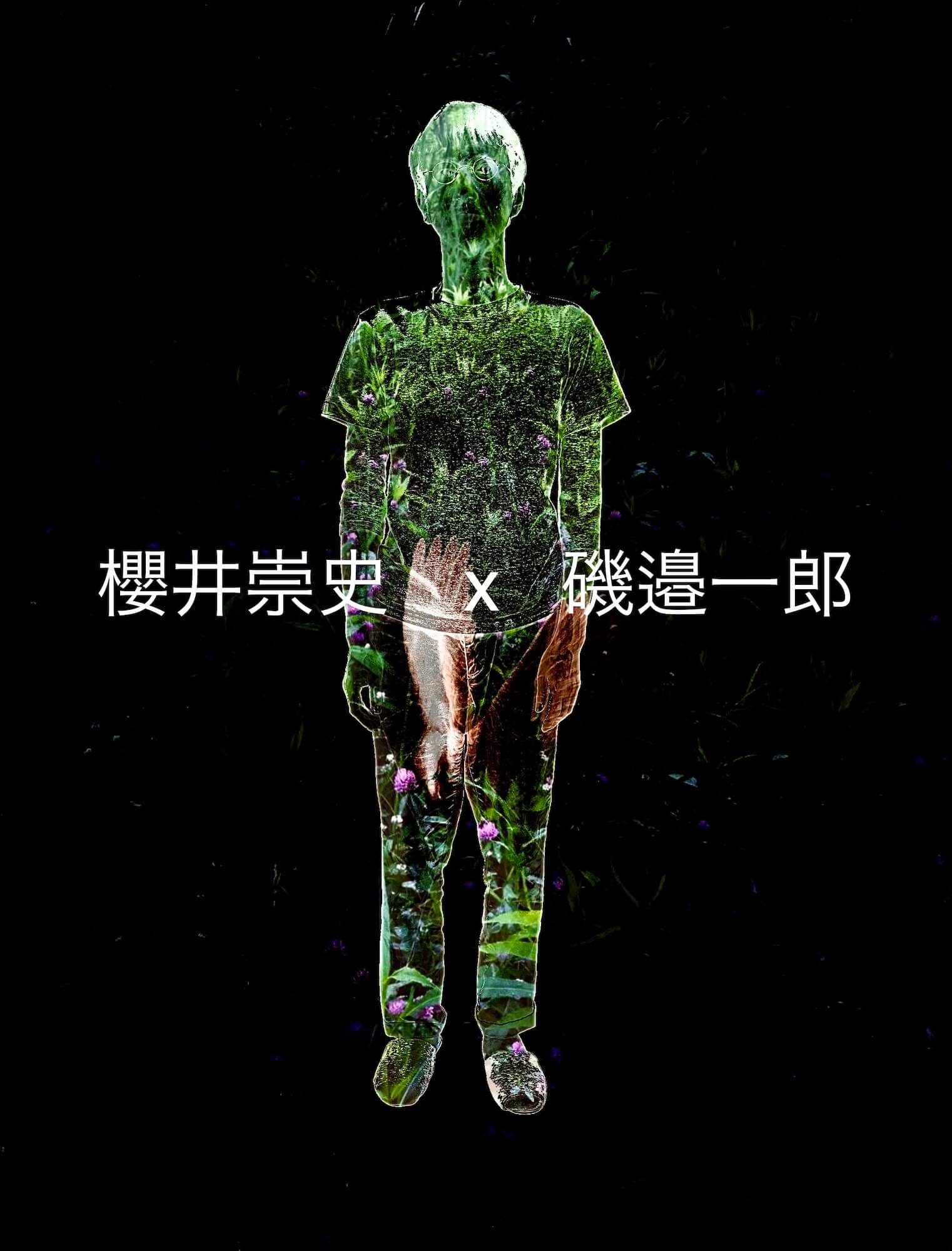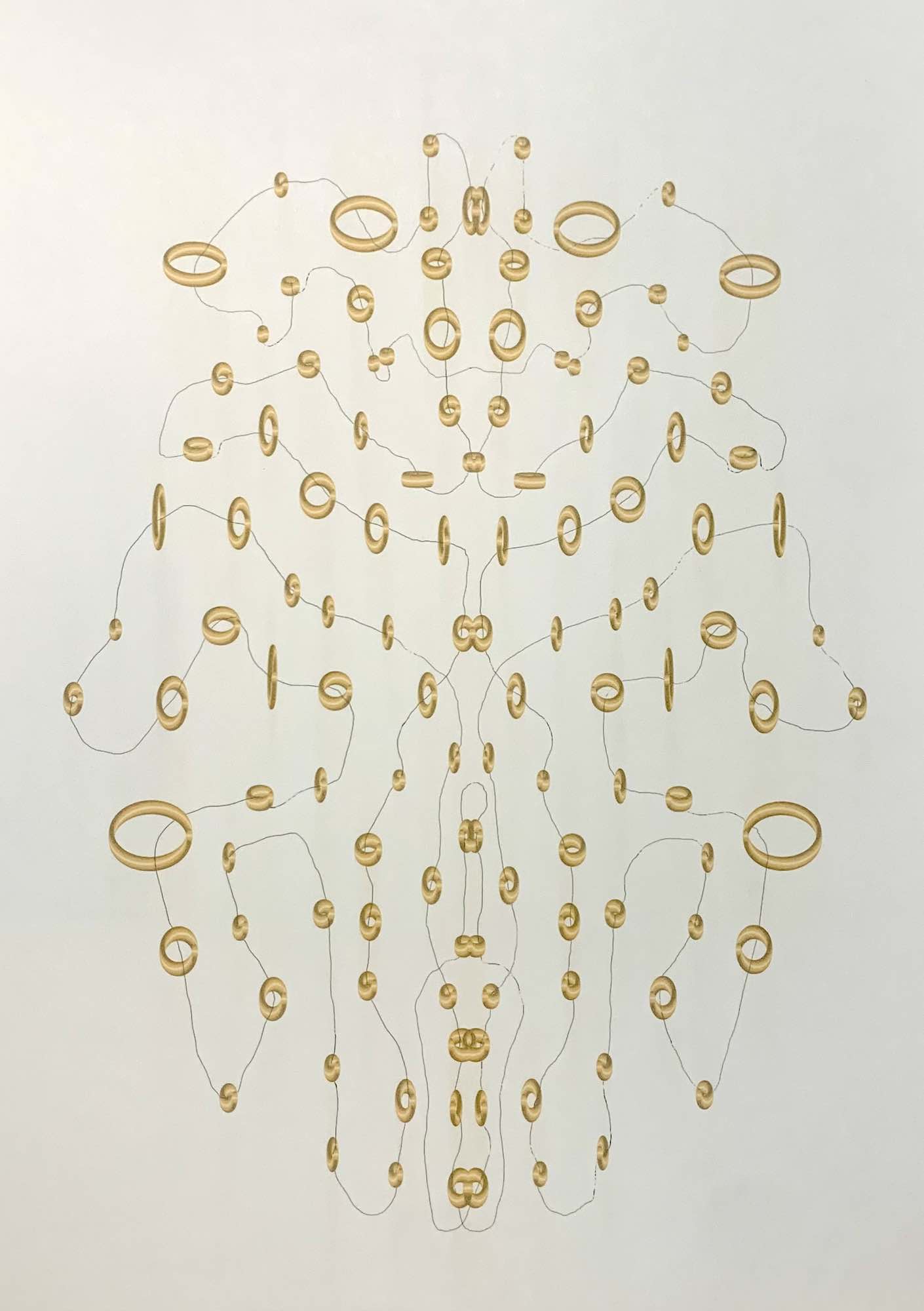KAYOKO YUKI
2-14-14 Komagome, Toshima-ku, Tokyo 170-0003 Japan
MAIL: info@kayokoyuki.com / TEL: +81(0)3-6873-6306
www.kayokoyuki.com
TAKASHI SAKURAI / ICHIRO ISOBE
Tombstones, Albums, Phantom
November 20 – December 19, 2021

KAYOKOYUKI is pleased to announce Tombstones, Albums, Phantom by Sakurai Takashi and Isobe Ichiro.
The artists produce works using CG and computers, and have published their works on various websites and SNS.
Even when viewing the works through a monitor, the matière shows how the artists attach significant importance to delicate expressions of material properties, and the act of drawing. Otherwise, by moving away from substantive materials such as canvases and paints, it may be suggested that they are exploring the act of "drawing" in a way, never before.
Through this exhibition, we focus not only on their works but also on the process by which they are created, and once again survey the relationships between data and matter, and virtual space and real space in today’s modern age.
「Tombstones, Albums, Phantom」
Since 2018, I have been conducting a project called "Namerakasa (Smoothness)"1, a platform in which allows one to appreciate art on the internet. Because the materials I had chosen to illustrate my paintings were in 3DCG, I felt it only natural to exhibit the paintings through the internet.
While preceding my activities on "Smoothness", I simultaneously had the strong desire to leave behind my paintings in this world, and thus came up with the idea to make a print-out edition of my digital work, and to sell/distribute them as a set. In this exhibition, I will chiefly exhibit the printed editions of my data works which I have made thus far.
While looking forward to future developments of blockchain technologies, at the level of this day and age I felt that physical printouts, over image data are more likely to remain in a viewable-state for ten years, and a hundred years on. I hope for these printed works to be handed down, and to be a presentation of the fact that "such paintings in this world existed", even after I have left. While these prints function as a work of art, simultaneously, I sometimes feel that such are like a tombstone—in other-words, a stone monument—in which enables me a chance to remember the works.
***
In recent years, Mr. Ichiro Isobe has been constantly uploading images created by combining hand-drawings and computer productions; photographs taken in daily life; and sounds produced individually, and or groups to his personal Instagram2 and YouTube3 accounts. While these expressions which have almost completely deviated from the so-called "work of art" form, are secretive and fragile, on the contrary, I find something very solid at its core.
Mr. Isobe claims that the purpose of posting images and sounds on his social media feeds to begin with, is for him to see them for himself. He also told me that by posting, he feels as if he is moving the images and sounds over to the other side. Even when the images are identical, they appear differently when stored on each individual’s personal device, and when they are embedded in account timelines and are being browsed.
Mr. Isobe’s expression, shift (it) to the other side seems to have a similar nature as sending the images to the equinox. Simultaneously, I felt it close to the action of picking out photographs from the scattered—in which were important to me—and composing them into an album, like in the era when it was still common for photographs to be printed out on photographic paper.
***
When comparing material pictures and physical print-outs to image datas on display, it may be seen that they have completely different characteristics. The colors able to be produced, and the range of light and darkness greatly differ between the screen display and the physical picture. While the display itself emits light to project the image, for the case of paper and paint, it reflects the light illuminated by light sources such as room lightings to form the image. The physical distance between the viewer and the picture differs when viewing an image by manually operating a smartphone or personal computer, and when viewing a picture hung on a wall in a gallery, etc.
It was also important for me that once the physical painting was hung on the wall, it could be viewed at all times without being intervened by a projecting device. When installing it in one’s home, one may feel as if they are living alongside with the painting in their passing days. Rather than appreciating it directly at all times, the situation of glimpsing it in one’s daily life will occur. Depending on the viewing environment such as lighting, climate, and the state of mind of the viewers, the relationship between the painting and the viewer constantly changes.
***
Image data, and paintings as physical matter. Each have differing pictorial characteristics, resulting in varying viewing experiences. By capturing and reconstructing each of their differing aspects, I feel it possible to establish a work of merely varying qualities in which complement each, rather than considering their superiorities / inferiorities.
Images projected onto a flickering display are often referred to as a phantom due to its absence of a physical entity. The act of printing a work of data and making it exist physically—as if re-illustrating a phantom-like image—seems to bring back the image in which was placed onto the other side (muko-gawa), to that of this side (kochira-gawa), or side/bank of the living (shigan). However, even if they lose their brilliance; are trapped in; and are exposed as a physical entity, I feel that those created by the artist will come to establish new relationships with the viewers even in the generations after the artists themselves, and thus come to create new phantoms.
Takashi Sakurai
1 https://www.smoothness.onl
2 https://www.instagram.com/ichiroisobe
3 https://www.youtube.com/channel/UCS2q_6xJv_qxSWLzO9LRagg

0011 2017 ink-jet print, acrylic mounting, 41 × 33.5 cm
Takashi Sakurai was born in 1983 in Aichi, Japan. Gained B.F.A and M.F.A in painting from Musashino Art University, Tokyo. He started online project "Smoothness" since 2018. Currently, Lives and works in Tokyo.
Recently, Sakurai presented his work in “Smoothness vol.3” as online project, 2020, “The National Mizuumi of Art, Okutama” -Supporting each other.OKUTAMA coin- at gallery αM / Tokyo 2020, “Probe” at switch point / Tokyo, 2019, “Smoothness vol.2" as online project, 2019, ”Kaisei” at Pehu, Galerie P38, KG / Osaka, Paris,Tokyo, 2018, “Smoothness" as online project, 2018, “a Sentry” at Koganeishi kankyo gakusyu kan / Tokyo, 2015, “Mother and Father" at TALION GALLERY / Tokyo, 2014, “Module village" at JIKKA / Tokyo, 2013, “exhibition show of Picture ” at unoccupied house / Tokyo, 2012, “secret sequence" at yamate83 / Kanagawa, 2011, “secret sequence" at ampcafe / Tokyo, 2010.
https://takashisakurai.com
https://www.smoothness.onl

untitled 2021 ink-jet print, pencil on paper, 42 × 29.7 cm
Ichiro Isobe was born in Hiroshima-ken in 1969. After 1996 year B seminar graduation, it's Saitama-ken residence.
In a main exhibition: "KURITERIOMU 62" Contemporary Art Center, Art Tower Mito (Ibaraki 2005), "X-EYE" Yamamoto present-day gallery (Tokyo 2007) "I stir, twinkling" 608 rooms of exhibition and 6 F of APMG Musashino Art University 9 number house (Tokyo 2008)
Group exhibition: "Draw it Black!" Yamamoto present-day gallery (Tokyo 2004), "VOCA exhibition" forest art museum in Ueno (Tokyo 2007), "ECHO exhibition" ZAIM(Yokohama2008), "dislocating" island (Chiba 2010), " Art for Tomorrow" Tokyo Wonder site Shibuya (Tokyo 2011), "ECHO show 2" BETANIAN art center (Berlin2012) ,"skull inauguration of new industrial enterprise 3331 TRANS ARTS Exhibition" old Tokyo Electrical Engineering College schoolhouse 11 number house (Tokyo 2012), "Isobe Ichiro x Odake Takaichirou Kay elephant Nin, omen" URANO gallery (east. Capital 2016), "ghost's hippocampus" citizen gallery Yata (Nagoya 2016), "works on paper" rin art association gallery (Gunma 2017)